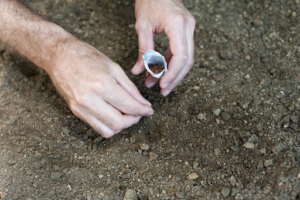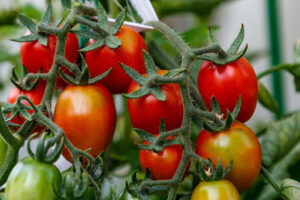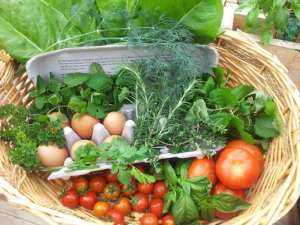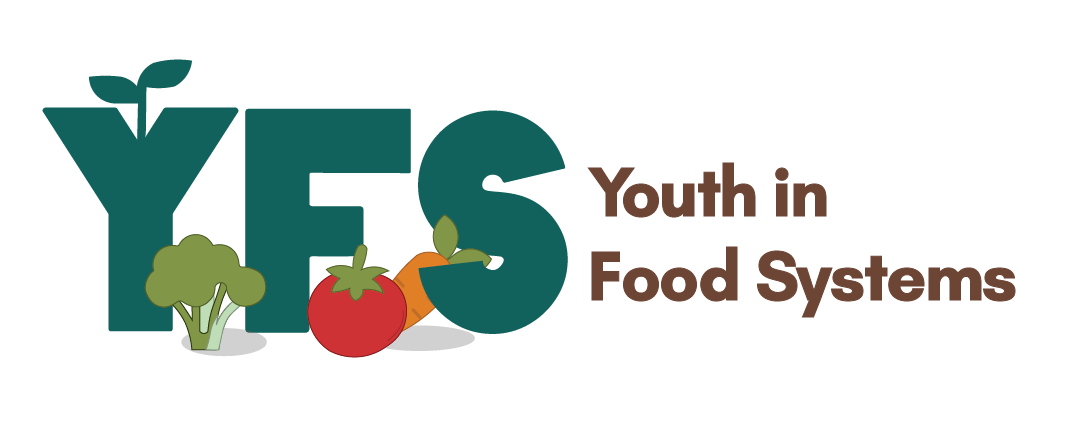Written by: Ruth Fisseha
Edited by: Jana Daniels
Designed by: Suhana Shaik
Published by: Rayna Almas
In a world where waste is so thoughtlessly disposed of, it can be difficult to recognize where waste can be mitigated. From our kitchens to our gardens, down to the seeds we toss aside—it is all done so effortlessly that it might not become apparent that more environmentally-friendly options exist.
Well, let me be the first to tell you that an eco-friendly, money-saving, time-sensitive solution does exist: it’s called seed saving. It’s the collection and preservation of seeds from plants so they can be replanted in the next growing season.

Free hand full of sunflower seeds public domain CC0 photo.
What is seed saving?
 Seed saving is the process of harvesting, drying, and storing seeds from mature plants for future use. Instead of buying packets of seeds each year, you recycle your garden’s own bounty.
Seed saving is the process of harvesting, drying, and storing seeds from mature plants for future use. Instead of buying packets of seeds each year, you recycle your garden’s own bounty.
For thousands of years, farmers and gardeners relied on seed saving to ensure the survival of crops, often passing down seed varieties through generations. Many of the fruits and vegetables we enjoy today exist because people saved seeds and shared them.
Seed saving isn’t just about cost savings, but about preserving biodiversity, protecting rare varieties, and developing plants that adapt to your specific soil and climate.
Why save seeds?
Several factors influence a crop’s ability to truly flourish, including evolution, environmental conditions, and time.
Self-Sufficiency:
One of the greatest benefits of seed saving is self-sufficiency. By collecting seeds from your own garden, you become less dependent on commercial seed companies. Instead of purchasing new packets each year, you can rely on what you’ve already grown, giving you more control over your food supply.
Cost-Effective:
A single tomato, pepper, or squash can provide dozens (sometimes even hundreds) of seeds, meaning your garden can essentially replenish itself for free. Over time, this practice can save you a significant amount of money while still giving you a thriving, productive garden.
Sustainability:
Growing from your own collection reduces the need for packaging, transport, and refrigeration that come with store-bought seeds. It’s a small but meaningful way to reduce waste and shrink your environmental footprint.
Preservation of Diversity:
Many rare or heirloom plant varieties are at risk of disappearing as industrial agriculture favours uniform crops. By saving and replanting these unique varieties, you help protect their genetic heritage and keep them alive for future generations.
Local Adaptation:
Each year that you replant seeds from your own garden, the plants adapt a little more to your specific soil, climate, and growing conditions. Over time, this creates crops that are not only hardier but also better suited to thrive right where you live.
How to save seeds: step by step
1. Choose the Right Plants
Start with healthy, strong plants. Avoid saving seeds from plants that look weak or diseased—you want the best genetics for the next season.


Pro tip: Begin with open-pollinated or heirloom varieties. Hybrid seeds (often labeled “F1”) don’t reliably produce true-to-type plants, meaning the next generation may not resemble the parent plant.
2. Harvest the Seeds
For dry seeds (beans, peas, lettuce): Let them fully mature and dry on the plant before harvesting.
For wet seeds (tomatoes, cucumbers, squash): Scoop seeds out of the fruit. In some cases (like tomatoes), seeds are coated in a gel that needs to be removed through fermentation.
3. Clean and Dry
For dry seeds: Shake off any chaff or plant debris.
For wet seeds: Rinse thoroughly, then spread on a paper towel or screen to dry.
Pro tip: Make sure seeds are completely dry before storing to prevent mold.
4. Store Properly
Place dried seeds in labeled envelopes or jars. Store them in a cool, dark, and dry place, like a pantry or basement. Some gardeners even keep seeds in the freezer for long-term storage.

5. Label Everything
Include the plant name, variety, and date. Trust me, you’ll thank yourself next year when you don’t have to play the “mystery seed” game.
Beginner-Friendly Seeds
If you’re new to seed saving, start simple:
- Tomatoes
- Peas and Beans
- Peppers
- Lettuce
These are relatively easy to work with and give consistent results.
Final thoughts
Seed saving is more than just a gardening technique—it’s an act of stewardship. Each seed you tuck away represents a commitment to sustainability, biodiversity, and self-reliance. By practicing this age-old tradition, you’re not just saving money, but helping to preserve genetic diversity, adapt crops to your local environment, and reduce waste in meaningful ways. In the end, the small act of saving a seed can have a big impact.
References
https://rootsandrefuge.com/a-complete-guide-to-seed-saving
https://www.threeacrefarm.net/blog/2018/10/10/seed-saving-for-beginners
https://www.growveg.com/guides/planning-for-seed-saving
https://www.saltspringseeds.com/pages/how-to-save-seeds
https://www.almanac.com/how-save-vegetable-seeds

